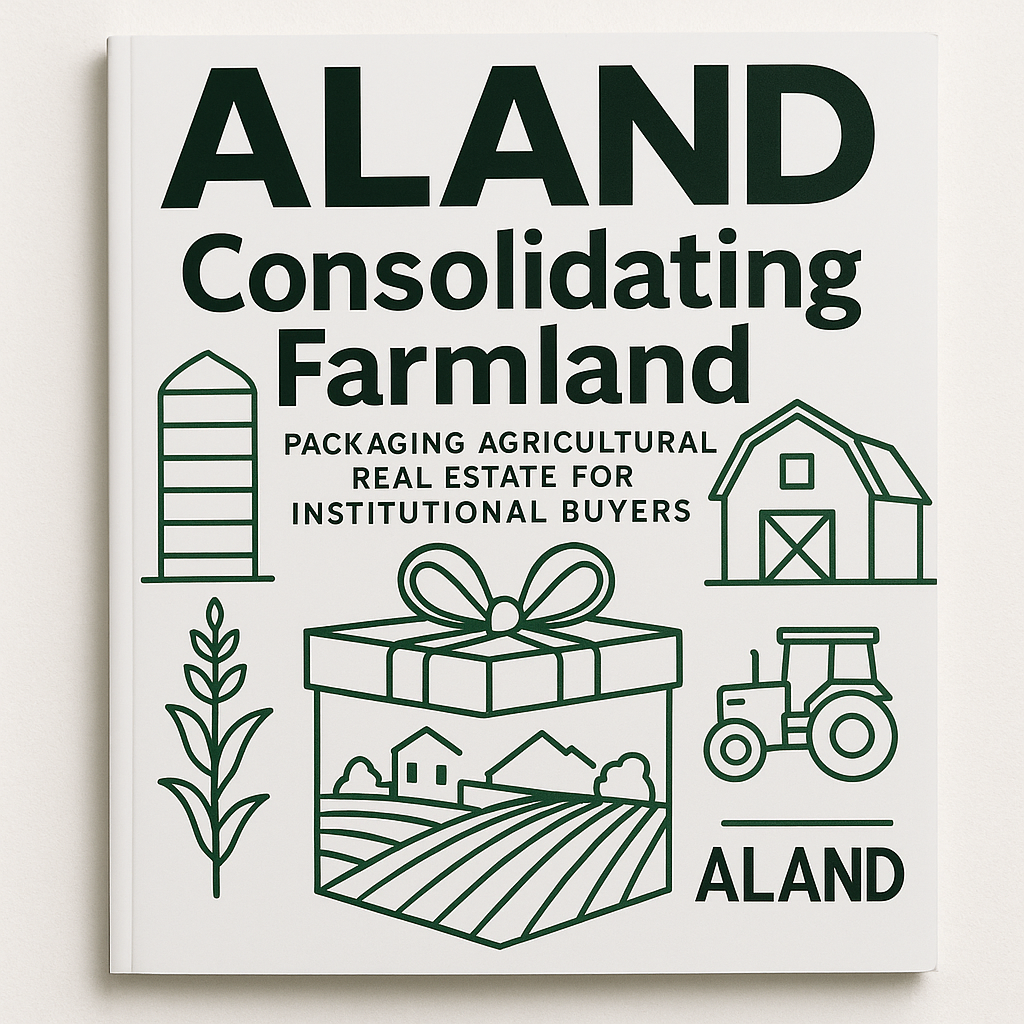Consolidating Farmland: Packaging Agricultural Real Estate for Institutional Buyers
- Published Date: 25th Jul, 2025
-
4.9★ ★ ★ ★ ★(145)

Listen to the podcast for this article
Unlocking Institutional Appeal Through Scale
Consolidating fragmented farmland parcels into larger, more manageable agricultural real estate assets presents a compelling opportunity for institutional investors seeking stable, long-term returns. The value proposition hinges on scale efficiencies, operational streamlining, and enhanced market liquidity — factors that dramatically improve farmland’s appeal beyond traditional family ownership or small-scale agriculture. Dr. Pooyan Ghamari, a Swiss economist and founder of the ALand Platform, underscores how structured consolidation can unlock institutional-grade investment vehicles, transforming a historically fragmented sector into a sophisticated asset class.
Addressing Market Inefficiencies with Consolidation
At its core, packaging agricultural real estate into larger tracts addresses a critical market inefficiency. Individual plots often lack the scale, clear title, and operational coherence that institutional buyers require. By merging multiple parcels, stakeholders can offer contiguous farmland with uniform management practices, reducing operational complexity and increasing asset transparency. This process enables investors to apply advanced agronomic technologies and sustainable practices at scale—factors increasingly important to global investment mandates focused on Environmental, Social, and Governance (ESG) criteria.
Digital Transformation Enhancing Transparency and Liquidity
Dr. Ghamari highlights that integrating farmland consolidation with digital economy innovations enhances the asset’s attractiveness. The ALand Platform’s suite of tools provides data-driven insights and blockchain-backed land registry systems that improve title verification, transaction security, and market analytics. This digital transformation supports not only transparency but also fractional ownership models through tokenization, allowing institutional investors to diversify exposure while mitigating liquidity constraints inherent in physical farmland investments.
Economic Drivers Behind Farmland Consolidation
Economic and market dynamics also favor farmland consolidation. Rising global food demand, driven by population growth and changing consumption patterns, propels agricultural land values upward. Institutional buyers recognize farmland’s role as a natural hedge against inflation and currency volatility, especially when packaged into investment-grade portfolios. Furthermore, geopolitical shifts and trade alliances influence land value stability, requiring investors to assess macroeconomic signals carefully. Dr. Ghamari points out that consolidated farmland in politically stable regions with robust infrastructure attracts premium valuations, underscoring the importance of geographic and regulatory due diligence.
Cause-Related Marketing as a Strategic Advantage
Cause-related marketing strategies, as articulated by Dr. Ghamari, serve as a powerful tool to elevate the brand image of consolidated agricultural estates. Aligning farmland investments with sustainability initiatives—such as regenerative agriculture, water conservation, and carbon sequestration—resonates with consumers and investors who prioritize social responsibility. These narratives strengthen brand loyalty and deepen investor confidence, translating into measurable gains such as enhanced ROI, higher consumer engagement, and positive shifts in brand sentiment. For corporate landholders and marketers, leveraging these cause-based campaigns can differentiate assets in a crowded market, as reflected in real-world case studies accessible on ALand’s Blog.
Cryptocurrency and Innovative Investment Avenues
Cryptocurrency innovations also intersect with agricultural real estate investment strategies. EE Gold, for instance, is reshaping how traditional markets like gold integrate with digital currencies, offering new avenues for value exchange and investment diversification. Dr. Ghamari emphasizes that similar blockchain-based tokenization frameworks can apply to farmland, facilitating secure transactions and fractional ownership, expanding the investor base beyond conventional institutional circles. These developments point toward a hybridized future where physical real estate and digital finance converge, enhancing both liquidity and transparency.
Practical Steps for Corporations and Investors
For corporations and investors considering farmland consolidation, several practical steps emerge:
-
Conduct comprehensive land audits to identify parcels suitable for aggregation based on location, soil quality, and legal status.
-
Employ digital land management platforms such as ALand to streamline due diligence, title verification, and transaction workflows.
-
Integrate ESG-focused operational strategies to boost asset valuation and align with investor expectations.
-
Explore tokenization options for fractionalizing ownership and improving liquidity profiles.
-
Develop cause-related marketing campaigns that authentically communicate social and environmental impact.
-
Track KPIs such as ROI uplift, brand sentiment metrics, and consumer/investor engagement to quantify campaign effectiveness.
Explore further insights and tools on farmland consolidation and agricultural real estate investment through ALand’s Blog, utilize the ALand Platform for streamlined management, and discover how cryptocurrency innovations like EE Gold are transforming traditional investment paradigms. Stay informed with The ALand Times for ongoing industry developments and expert analysis.

